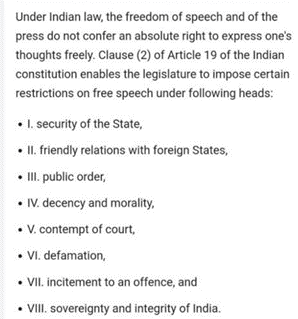Tuesday, 10th January 2023
At first T.N. Assembly session of 2023, a Governor Vs CM face-off
Context:
While delivering the inaugural address composed by the state government, the Governor skipped some portions with which he didn‘t agree.
- While the Constitution says the Governor shall address the first session of the Assembly each year, legal experts say that such deviations from the government’s speech could not be seen as a violation of constitutional law.
Governor’s discretionary powers on customary address:
According to the experts:
- As per convention and Constitution, a governor is head of a state and is bound to read out the speech approved by the government.
- He is not responsible for the contents of the speech and this is a practice prevailing in various democracies where parliamentary system is present.
- An elected government is responsible to the legislature, which in turn is responsible to the electorate.
- Even if the governor adds or subtracts to the speech, it would not be taken on record.
Source of Government’s Power:
Governors, as heads of states, derive their powers from Article 163 of the Constitution.
- There is no bar for them giving suggestions.
- As per Article 163, by the discretionary powers entrusted to governors under the Constitution, they are bound by the aid and advice of the council of ministers in the exercise of all functions.
Source:
The Hindu, Hindustan Times, aplegislature.org
New system to measure and grade performance of hospitals
Context: The National Health Authority (NHA) has introduced a new system to measure and grade performance of hospitals under the flagship scheme Ayushman Bharat Pradhan Mantri Jan Arogya Yojana (AB PM-JAY).
Objective: The aim is to shift the focus of measuring performance of hospitals from volume of services provided to the value of healthcare services.
Highlights:
- The new initiative will introduce the concept of ‘value- based care’, where payment will be outcome based and providers will be rewarded according to the quality of the treatment delivered.
- Under the new model, the providers will be rewarded for helping the patients improve their health, which consequently will reduce the effects of disease in the population in the long term.
Performance of AB PM-JAY empaneled hospitals:
Under value-based care, the performance of AB PM-JAY empaneled hospitals will be measured based on five performance indicators:
- Beneficiary satisfaction.
- Hospital readmission rate.
- The extent of out-of-pocket expenditure.
- Confirmed grievances.
- Improvement in-patient’s health-related quality of life.
Significance:
In this way, the hospital performance shall not only determine the financial incentive of the hospital but also create a demand for quality treatment of beneficiaries under PM-JAY.
|
National Health Authority National Health Authority (NHA) is the apex body responsible for implementing India’s flagship public health insurance/assurance scheme called “Ayushman Bharat Pradhan Mantri Jan Arogya Yojana” (PM-JAY).
Composition of NHA:
|
Forced Conversions - Edukemy Current Affairs
Context:
The Supreme Court has stated that religious conversion is a "serious issue" that should not be given a "political colour".
- The Court also stated that the right to freely practice, profess, and propagate religion is guaranteed by the Indian Constitution.
Background:
The statement was made in the context of a case involving the conversion and marriage of a Hindu woman to a Muslim man in Tamil Nadu.
- The woman's family has alleged that the conversion and marriage were forced, while the man and the woman have denied these allegations.
Implications of the statement:
- The statement suggests that the Court views religious conversions as a serious issue that should be treated with impartiality and not be politicized.
- The statement also reaffirms the right to freedom of religion guaranteed by the Indian Constitution.
History of laws on religious conversions in India:
- The Indian Constitution guarantees the right to freely practice, profess, and propagate religion.
- The Freedom of Religion Acts, also known as "anti-conversion" laws, have been enacted in several states in India.
- These laws aim to prevent conversions that are deemed to be forced, fraudulent, or induced through allurement.
Types of Freedom of Religion Acts:
"One-way" laws, which only prohibit conversions from certain religions (e.g. Hinduism) to others.
"Two-way" laws, which prohibit conversions from any religion to any other religion.
"No-declaration" laws, which require those who have undergone a conversion to inform the government.
Challenges and criticisms of Freedom of Religion Acts:
- These laws have faced criticism for being used to target religious minorities and for violating the right to freedom of religion.
- Some argue that these laws are unnecessary because existing laws against fraud, coercion, and allurement are sufficient to address any abuses related to conversions.
Sources: the Hindu.
Young Professionals Scheme - Edukemy Current Affairs
Context:
India and the UK recently signed an agreement to facilitate the exchange of young professionals.
 India-UK Young Professionals Scheme:
India-UK Young Professionals Scheme:
- The scheme will enable young professionals from India and UK to gain international experience and skills through job shadowing, internships, and other forms of professional attachment.
Purpose of the scheme:
The purpose of the scheme is to provide opportunities for young professionals to gain international experience and improve their professional development.
Benefits of the scheme:
By participating in the scheme, young professionals will be able to expand their networks, develop their skills, and gain a broader understanding of different cultures and business practices.
Potential industries:
The scheme will be open to all sectors, but it is expected to be particularly beneficial for young professionals in the fields of technology, creative industries, and the low-carbon economy.
Sources: the Hindu.
Aizawl Protests: Demand for Kuki-Chin Refugee Asylum
Context:
Civil society groups in Aizawl are demanding that the Indian government allow Kuki-Chin refugees to enter the country.
Reasons for protest:
- The protesters argue that the Kuki-Chin refugees are facing persecution in Myanmar and should be granted asylum in India.
- They also cited the lack of humanitarian assistance to the refugees, who have been living in makeshift camps for several years.
Overall situation:
- Kuki-Chin, the Christian community from Bangladesh’s Chittagong hill tracts, share close ethnic ties with people in Mizoram.
- The first tranche of around 300 refugees came in November 2022.
- The Mizoram government has approved setting up of temporary shelters and other amenities for the community, following an action by the Bangladesh Rapid Action Battalion against some insurgents belonging to the group.
Refugees in India:
India is not a signatory to the United Nations Refugee Convention of 1951 and its 1967 Protocol and does not recognise refugees, and the undocumented migrants are liable to be prosecuted for violating the Foreigners Act.
Who are they?
- The Kuki Chin people belong to the Kuki ethnic group native to the Mizo hills.
- They are collectively called the Zo people.
- Kuki Chins are of the same ancestry as Chins of Myanmar and Mizos of Mizoram.
- They are settled in the Chittagong Hill Tracts, the only extensive hill area in Bangladesh.
Sources: the Hindu.
What is the Raman Effect? - Edukemy Current Affairs
The Raman effect is a phenomenon that occurs when light passes through a substance and is scattered, causing a change in the light's frequency.
- This change in frequency can be used to identify and study the properties of the substance the light passed through.
- The effect was first described by Indian scientist Sir Chandrasekhara Venkata Raman in 1928.
- It has since been used in fields such as chemistry and materials science to analyze and understand the characteristics of different materials.
Applications:
- The Raman Effect gave birth to the field of Raman spectroscopy, which has extensive applications around the globe, and across fields.
- Spectroscopy is the study of the interaction between matter and electromagnetic radiation.
- It can help in determining chemical bonding structures, characterise materials, determine temperature, find out crystalline orientation, identify pharmaceutical chemicals, discover counterfeit drugs, identify pigments in old paintings and historical documents, and detect explosives using lasers from a distance.
Who was CV Raman?
Chandrashekhara Venkata Raman was a physicist from Tamil Nadu.
- His work in the field of light scattering earned him the Nobel Prize for Physics in 1930.
- This phenomenon was named the Raman effect.
- In 1954, he was honoured with India's highest civilian award, the Bharat Ratna.
Governor's address to the house
Constitutional provisions:
- Article 176(1) of the Constitution of India: At the commencement of the first session after each general election to the Legislative Assembly and at the commencement of the first session of each year, the Governor shall address both Houses assembled together and inform the Legislature of the causes of its summons.
- Article 176(2): Provision shall be made by the rules regulating the procedure of the House or either House for the allotment of time for discussion of the matters referred to in such address.
What it contains?
- The Address of the Governor contains a review of the activities and Achievements of the Government during the previous year and their policy with regard to important internal problems as well as a brief account of the programme of Government Business for the session.
- The speech is prepared by the Government and approved by the Governor.
Discussions and Motion of Thanks on Governor’s address:
- On the first day on which the discussion on the Address of the Governor begins, a copy of the Address of the Governor is laid on the table of the House.
- The Speaker, in consultation with the Business Advisory Committee, allots time for discussion of the matters referred to in the Governor's Address.
- A motion is moved by a member and seconded by another member thanking the Governor for the Address.
- The occasion provided for General Discussion in respect of any aspect of administration and also the matters referred to in the address.
- Members may move Amendments to the Motion of Thanks in such form as may be considered appropriate by the Speaker.
- The Chief Minister or any other Minister has the right to explain the position of the Government at the end of the discussion.
Ayushman Bharat PM-JAY - Edukemy Current Affairs
What is it?
Ayushman Bharat PM- JAY is the world's largest health assurance scheme.
It aims at providing a health cover of Rs. 5 lakhs per family per year for secondary and tertiary care hospitalization to poor and vulnerable families.
- PM-JAY is fully funded by the Government and cost of implementation is shared between the Central and State Governments.
- PM-JAY envisions to help mitigate catastrophic expenditure on medical treatment which pushes nearly 6 crore Indians into poverty each year.
Key Features of PM-JAY:
- PM-JAY provides a cover of Rs. 5 lakhs per family per year for secondary and tertiary care hospitalization across public and private empanelled hospitals in India.
- It provides cashless access to health care services for the beneficiary at the point of service, that is, the hospital.
- It covers up to 3 days of pre-hospitalization and 15 days post-hospitalization expenses such as diagnostics and medicines.
- Benefits of the scheme are portable across the countrye. a beneficiary can visit any empanelled public or private hospital in India to avail cashless treatment.
- The National Health Authority (NHA) is the nodal agency responsible for the nationwide roll-out and implementation of the AB-PMJAY scheme.
- Public hospitals are reimbursed for the healthcare services at par with the private hospitals.
Eligibility:
- There is no restriction on the family size, age or gender.
- All pre–existing conditions are covered from day one.
Ozone Hole - Edukemy Current Affairs
Context: According to a new U.N. report, Earth’s protective ozone layer is slowly but noticeably healing at a pace that would fully mend the hole over Antarctica in about 43 years.
Key points of the report:
- The ozone hole is projected to be completely healed by 2066.
- This healing is attributed to the 1987 Montreal Protocol, which regulated the production and consumption of ozone-depleting substances.
- Despite this progress, the UN warns that climate change continues to threaten the ozone layer.
- Ozone depletion still occurs at the poles, and levels of ozone-depleting substances in the atmosphere remain high.
- The UN urges continued efforts to reduce the use of these substances and curb greenhouse gas emissions to protect the ozone layer and mitigate climate change.
What is the ozone hole?
- The ozone hole is not technically a “hole” where no ozone is present, but is actually a region of exceptionally depleted ozone in the stratosphere over the Antarctic that happens at the beginning of Southern Hemisphere spring (August–October).
What is Ozone?
- Ozone is a gas made up of three oxygen atoms (O3).
- It occurs naturally in small (trace) amounts in the upper atmosphere (the stratosphere).
- Ozone protects life on Earth from the Sun’s ultraviolet (UV) radiation.
- In the lower atmosphere (the troposphere) near the Earth’s surface, ozone is created by chemical reactions between air pollutants from vehicle exhaust, gasoline vapors, and other emissions.
- At ground level, high concentrations of ozone are toxic to people and plants.
Where is ozone produced?
- Most of the stratospheric ozone is produced at tropical latitudes, but high-altitude winds spread it over the whole planet.
- It is continually forming and breaking down, and its distribution over the planet is not uniform or constant.
- Instead, there are seasonal and longer-term variations in the quantity of stratospheric ozone in different parts of the world.
Harmful effects of Ozone:
- Ozone can also be formed at ground level to produce ‘photochemical smog’; and, as ozone is a toxic gas, there is a health hazard when ozone reaches high levels.
- This problem occurs primarily in the summer in cities with a high amount of traffic when sunlight interacts with car exhaust fumes containing nitrogen oxides.
Source: The Hindu
China's Wolf Warrior Policy - Edukemy Current Affairs
Context: Chinese foreign ministry spokesperson Zhao Lijian, who gained prominence as one of China's most outspoken "wolf warrior" diplomats, has been transferred to its department that manages land and sea borders.
China’s ‘Wolf Warrior’ diplomacy:
- "Wolf Warrior" diplomacy is a term used to describe China's more assertive and aggressive approach to diplomacy in recent years.
- Diplomatic experts say that this approach is likely a reflection of China's growing power and confidence on the world stage, as well as a response to perceived disrespect and criticism from other countries.

What does wolf warrior diplomacy mean?
- “Wolf warrior diplomacy” is a tactic for the Chinese government to extend its ideology beyond China and counter the West and defend itself.
- It is an unofficial term for the more aggressive and confrontational style of communication that Chinese diplomats have taken to in the last decade.
- The term "Wolf Warrior" is derived from a Chinese action movie which has been interpreted as a symbol of China's more aggressive diplomatic stance.
What is the need for wolf warrior diplomacy?
- According to Chinese officials, the move is simply about standing up to what they believe is Western interference.
Concerns:
- Wolf Warrior diplomacy also seems to be reflected in China's growing military assertiveness and more assertive stance in international organizations.
- This Wolf Warrior diplomacy has led to criticism and concern from other countries, as it has led to increased tension and conflicts on some diplomatic issues.
Source: The Hindu.
Green Bond - Edukemy Current Affairs
Context: The Reserve Bank of India (RBI) announced that it will, for the first-time, issue Sovereign Green Bonds (SgrBs) worth Rs 16,000 crore, in two tranches of Rs 8,000 crore each in the current financial year.
What are Green Bonds?
- A green bond is a fixed-income instrument designed specifically to support specific climate-related or environmental projects. It encourages sustainability.
- Green bonds finance projects aimed at green projects such as, energy efficiency, pollution prevention, sustainable agriculture and sustainable water management.
Who issued these bonds?
- Green bonds are bonds issued by any sovereign entity, inter-governmental groups or alliances and corporations with the aim that the proceeds of the bonds are utilized for projects classified as environmentally sustainable.
- The framework for the sovereign green bond was issued by the government on November 9, 2022.
Importance: Green Bonds have emerged as an important financial instrument to deal with the threats of climate change and related challenges.
How beneficial is it for investors?
- Green Bonds offer investors a platform to engage in good practices, influencing the business strategy of bond issuers.
- They provide a means to hedge against climate change risks while achieving at least similar, if not better, returns on their investment.
Where will the proceeds go?
- The government will use the proceeds raised from SGrBs to finance or refinance expenditure (in parts or whole) for various green projects.
- In renewable energy, investments will be made in solar, wind, biomass and hydropower energy projects.
Source: Indian Express
Capital Expenditure - Edukemy Current Affairs
- Context: Recently new FICCI President put emphasis on investment in India.
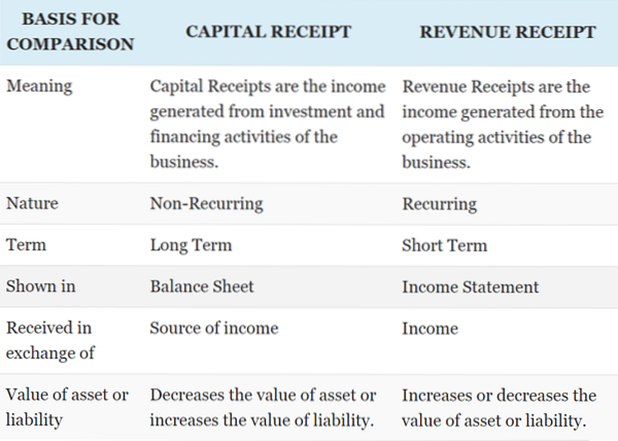
- Capital expenditure is the money spent by the government on the development of machinery, equipment, building, health facilities, education, etc.
- It also includes the expenditure incurred on acquiring fixed assets like land and investment by the government that gives profits or dividend in future.
- Capital expenditure includes:
-
- Acquiring fixed and intangible assets
- Upgrading an existing asset
- Repairing an existing asset
- Repayment of loan
- Relevance of Capital Expenditure
-
- It allows the economy to generate revenue for many years by adding or improving production facilities and boosting operational efficiency.
- It also increases labour participation, takes stock of the economy and raises its capacity to produce more in future.
- Also, it reduces liability.
Source:
https://indianexpress.com/article/opinion/columns/time-to-invest-in-india-ficci-president-subhrakant-panda-opinion-8371473/
https://www.business-standard.com/about/what-is-capital-expenditure
Economic Stimulus - Edukemy Current Affairs
- Context: Recently the new FICCI president put emphasis on investment in India.
- Economic stimulus refers to targeted fiscal and monetary policy intended to elicit an economic response from the private sector.
- Economic stimulus relies on encouraging private sector spending to make up for loss of aggregate demand.
- Policy tools for implementing economic stimulus include lowering interest rates, increasing government spending, and the purchase of assets by the central bank in a process known as quantitative easing.
- The government adopts stimulus policies during times of recession usually.
- A stimulus package is a coordinated combination of fiscal and monetary measures put together by a government.
- Difference between Fiscal and Monetary Stimulus
|
Fiscal stimulus |
Monetary stimulus |
|
|
|
2. It includes:
|
2. It includes:
|
Source:
https://indianexpress.com/article/opinion/columns/time-to-invest-in-india-ficci-president-subhrakant-panda-opinion-8371473/
https://www.investopedia.com/terms/e/economic-stimulus.asp
What is Land Subsidence? - Edukemy Current Affairs
Joshimath sinking: The exact reason behind Joshimath land subsidence is still unknown but experts cite unplanned construction, over-population, obstruction of the natural flow of water, and hydel power activities as possible causes.
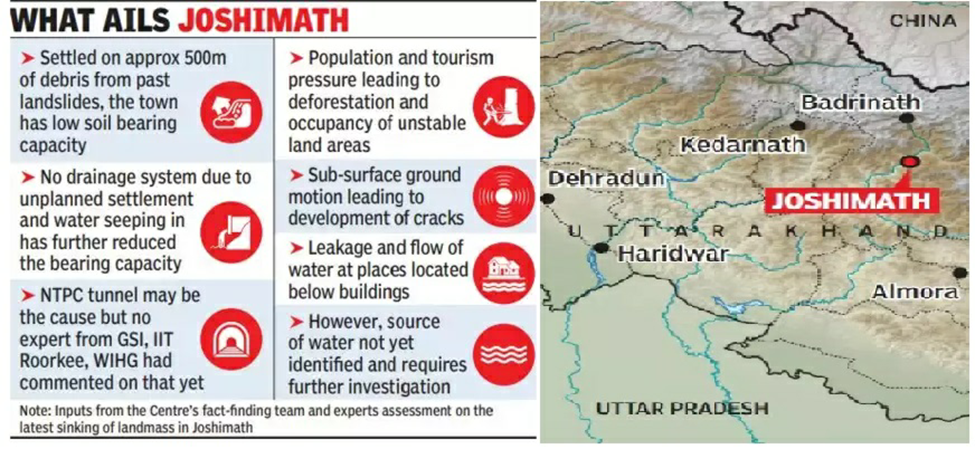
What is Land Subsidence?
Land subsidence is the sinking or settling of the Earth's surface as a result of natural or human-induced changes to the subsurface. It is a slow and gradual process that can have significant negative impacts on infrastructure, buildings, and the environment.
Causes of Land Subsidence:
There are several natural and human-induced causes of land subsidence, including:
Compaction of soil: When soil is compacted due to the weight of buildings, roads, and other structures, it can lose its ability to support the weight and begin to sink.
Groundwater withdrawal: When large amounts of groundwater are pumped from the subsurface, the spaces left behind can cause the land to sink.
Glacial rebound: As ice sheets retreat, the land that was previously covered by ice can rise, while the surrounding areas sink.
Volcanic activity: Volcanic eruptions can cause land to sink as the magma chamber beneath the surface collapses.
Peat decomposition: Peatlands are composed of organic matter, when they are drained, they start to decompose which causes the land to subside.
Reasons behind the subsidence:
Location: Joshimath is situated in the middle slopes of a hill bounded by the Karmanasa and Dhaknala streams on the west and the east and the Dhauliganga and Alaknanda rivers on the south and the north.
- According to a study by ‘Uttarakhand State Disaster Management Authority’ (USDMA), the town is located in an area prone to landslides.
Topography:
- The perennial streams, appreciable snow in the upper reaches, and highly weathered gneissic rocks with low cohesive characteristics makes the area prone to landslides.
- The area around Joshimath town is covered with a thick layer of overburden material.
- Large boulders of gneisses and fragments of basics and schistose rocks are embedded in grey-coloured, silty-sandy matrix. This makes the town highly vulnerable to sinking.
Extreme weather:
- The impact of extreme rainfall events is visible in latest satellite data, which shows that mountain streams have expanded their channels and changed course, thereby inducing more slope instability in an already fragile belt.
- Huge volume of debris-laden water brought down by the Dhauliganga during a previous flood event (February 2021) has also aggravated the toe erosion along the left bank of the Alaknanda, downstream of its confluence with the Dhauliganga river at Vishnuprayag.
Geology:
Joshimath is in Chamoli district which falls in Zone V of the Seismic Zonation Map and has witnessed several earthquakes of magnitude of less than 5 on the Richter scale.
- Joshimath almost sits on the Vaikrita Thurst (VT), a tectonic fault line.
- The town is also very close to main geological fault lines, Main Central Thrust (MCT), and Pandukeshwar Thrust (PT).
- Being on a fault line and close to another two makes Joshimath highly vulnerable to sinking because of tectonic activity.
Unplanned construction:
- Hydroelectric schemes have been sanctioned around Joshimath and Tapovan, including the Vishnugad Hydro Electric Project.
- Unplanned developmental activities without due regard to bearing capacity have contributed to aggravating slope instability-related issues in Joshimath.
Improper water drainage:
Experts and USDMA pointed out reasons for increase in ground seepage of water from surface, a probable cause for subsidence.
- First, on-surface anthropogenic activities have blocked natural water drainage systems, forcing water to find new drainage routes.
- Second, Joshimath town does not have sewage and wastewater disposal system.
Consequences of Land Subsidence:
Land subsidence can have a number of negative consequences, including:
Damage to infrastructure: Subsidence can damage or destroy roads, buildings, bridges, and other infrastructure, making them unsafe and costly to repair.
Flooding: Subsidence can cause land to sink below sea level, making it more susceptible to flooding.
Loss of wetland and ecosystem: Subsidence of peatland also leads to loss of wetland habitats and the ecosystem it supports.
Interference with drainage: Subsidence can also interfere with drainage systems, leading to increased flooding and water pollution.
Solutions of Land Subsidence:
To combat land subsidence, several solutions are available, which include:
Reducing groundwater pumping: By reducing the amount of groundwater pumped from the subsurface, the land can be stabilized and subsidence can be prevented.
Improving drainage: By improving drainage systems, water can be removed from the subsurface, reducing the risk of subsidence.
Reforestation: When forests are restored on subsiding land, it can help to prevent subsidence by increasing the amount of water in the subsurface and reducing the amount of compaction caused by human activities.
Peatland restoration: By restoring peatland and keeping them wet, it can prevent peat decomposition and subsidence of the land.
Land use planning: By implementing land-use planning, and carefully considering how land is used, subsidence can be prevented.
Sources: Indian Express.
Rioting and vandalism against State institutions in Brasilia
Context: The Prime Minister of India has expressed his concern about the news of rioting and vandalism against the State institutions in Brasilia.
What happened in Brazil?
- Supporters of former Brazilian President Jair Bolsonaro who refused to accept his electoral defeat stormed Congress, the Supreme Court and presidential palace in the capital.
- This happened just a week after the inauguration of leftist President Luiz Inácio Lula da Silva.
- Some of the demonstrators called for a military intervention to either restore the far-right Mr. Bolsonaro to power or oust Mr. Lula from the presidency.

Source: PIB
National Science Day 2023 - Edukemy Current Affairs
Recently, the theme for National Science Day 2023 was released.
Key points:
- Theme for NSD 2023 will be 'Global Science for Global Wellbeing', which indicates India's emerging global role and rising visibility in the international arena.
- National Science Day is celebrated every year on February 28 to commemorate the discovery of the "Raman Effect".
- On this day, Indian physicist C V Raman announced the discovery of the 'Raman Effect' for which he won the Nobel Prize in 1930.
Source: PIB
Ship Repair Facility at Pandu - Edukemy Current Affairs
Context: PM Modi will unveil foundation stones of ship repair facility, Pandu Port Road project in Assam.
- The Ship Repair Facility will be built at a cost of INR 190 crore and will provide employment to about 1,000 people.
- The Pandu Port Road Project, costing INR 441 crore, will improve connectivity and boost economic development in the region.
Pandu Port:
- Pandu Port is a river port in the Indian state of Assam, and acts as a natural river harbour.
- The port has been working as the main river port of the Brahmaputra valley for a long-time centering Guwahati city.
- It falls under Dhubri-Sadiya National Waterway-2 and is an important terminal cum transit point for goods and cargo as well as passenger and tourist vessels.
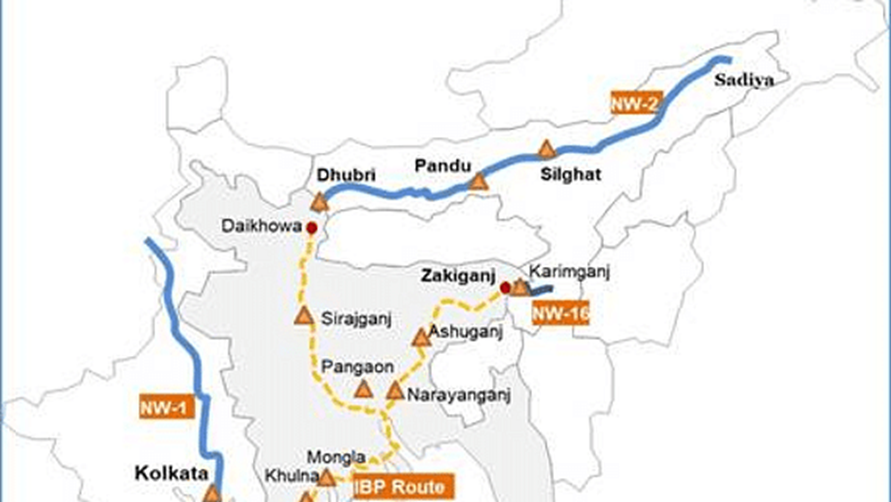
Source: PIB.
Himalayan Griffon - Edukemy Current Affairs
The Himalayan Griffon Vulture, Gyps himalayensis, is an Old World vulture in the family Accipitridae, which also includes eagles, kites, buzzards and hawks.
- It has a white neck ruff and yellow bill and the whitish body and wing coverts contrast with the dark flight feathers.

Protection Status:
IUCN Red List: Near Threatened (NT).
Distribution Range:
- The Himalayan vulture mostly lives in the Himalayas on the Tibetan plateau (India, Nepal and Bhutan, central China and Mongolia).
- It is also found in the Central Asian mountains (from Kazakhstan and Afghanistan in the west to western China and Mongolia in the east).
New Standards in the area of Electronics

The Bureau of Indian Standards has published three significant Indian Standards in the area of Electronics.
- Indian Standard for digital television receivers with built in satellite tuners: TVs manufactured as per this Indian standard would enable reception of Free-To-Air TV and Radio channels just by connecting a dish antenna with LNB mounted on a suitable place, at roof top/side wall of the building.
- Indian Standard for USB Type C receptacles, plug and cables: This standard would provide common charging solutions for the smartphones and other electronic devices sold in the country.
- Indian Standards for Video Surveillance Systems: The standard provides a detailed outline of all the aspects of a Video Surveillance System such as requirements for its components like camera devices, interfaces, system requirements and tests to ascertain the image quality of the camera devices and also specifies guidelines on efficient installation of the system.
A step towards fighting corruption
The December 2022 Supreme Court judgment in the case of Neeraj Dutta v. State (Govt. of NCT of Delhi) lowered the bar for the quantum of evidence required to convict persons charged with corruption in India.
Impact of the judgment:
- The judgment has been hailed by those who desire probity in public administration and demand deterrent penalties for criminal activities.
- The judgment debunks the myth that absolute proof of guilt alone can help convict an offender, and sets the standard of "preponderance of probability" as the yardstick for determining guilt.
- The judgment also allows for the acceptance of circumstantial evidence as sufficient for conviction, even if prosecution witnesses turn hostile or are not traceable.
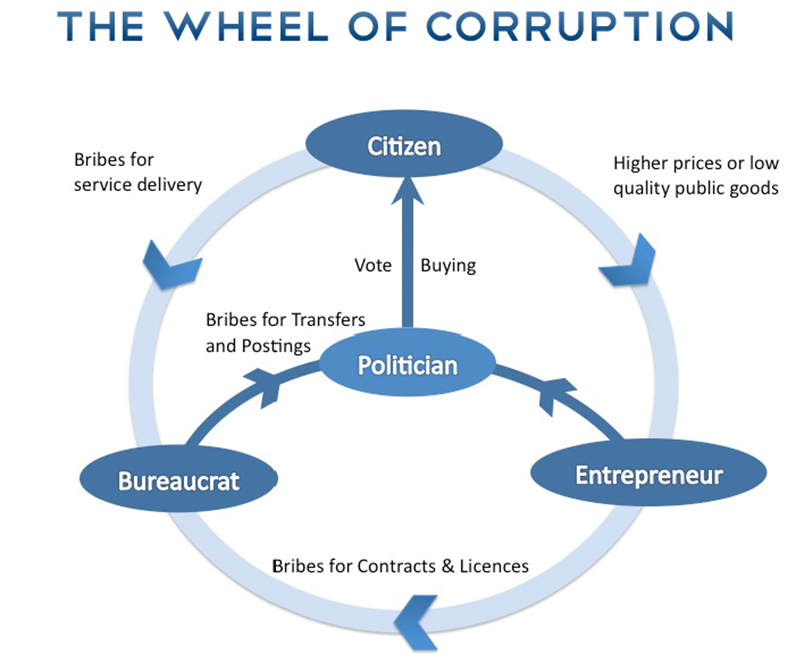
Challenges to combating corruption:
- There are two aspects to the fight against corruption: The severity of the law and its application, and the strength of public opinion that would help carry forward the campaign for a clean public life.
- There is often a demand for harsher penalties for criminal behavior, but this can lead to higher quantum of proof required by courts to be convinced of guilt.
- There is also a nexus between offenders and victims, and the role of political corruption in facilitating corruption among public servants.
Role of public opinion:
- Public opinions are important in the fight against corruption.
- There is a need for a concerted effort by the media, civil society, and individuals to create a culture of intolerance towards corruption.
- The corrupt can be deterred only if the public is convinced that the corrupt will be punished, and this can be achieved through a continuous campaign against corruption.
Need for stronger laws and their implementation:
- There is a need for stronger laws to combat corruption, and for their effective implementation.
- Laws should be targeted at specific areas of corruption, such as electoral corruption, corruption in public procurement, and corruption in the granting of licenses and approvals.
- There should be a greater focus on preventing corruption, rather than just punishing it after the fact.
- There is the need for creation of independent and empowered agencies to investigate and prosecute corruption cases, and for the protection of whistle-blowers and witnesses.
Share the article
Get Latest Updates on Offers, Event dates, and free Mentorship sessions.

Get in touch with our Expert Academic Counsellors 👋
FAQs
UPSC Daily Current Affairs focuses on learning current events on a daily basis. An aspirant needs to study regular and updated information about current events, news, and relevant topics that are important for UPSC aspirants. It covers national and international affairs, government policies, socio-economic issues, science and technology advancements, and more.
UPSC Daily Current Affairs provides aspirants with a concise and comprehensive overview of the latest happenings and developments across various fields. It helps aspirants stay updated with current affairs and provides them with valuable insights and analysis, which are essential for answering questions in the UPSC examinations. It enhances their knowledge, analytical skills, and ability to connect current affairs with the UPSC syllabus.
UPSC Daily Current Affairs covers a wide range of topics, including politics, economics, science and technology, environment, social issues, governance, international relations, and more. It offers news summaries, in-depth analyses, editorials, opinion pieces, and relevant study materials. It also provides practice questions and quizzes to help aspirants test their understanding of current affairs.
Edukemy's UPSC Daily Current Affairs can be accessed through:
- UPSC Daily Current Affairs can be accessed through Current Affairs tab at the top of the Main Page of Edukemy.
- Edukemy Mobile app: The Daily Current Affairs can also be access through Edukemy Mobile App.
- Social media: Follow Edukemy’s official social media accounts or pages that provide UPSC Daily Current Affairs updates, including Facebook, Twitter, or Telegram channels.




